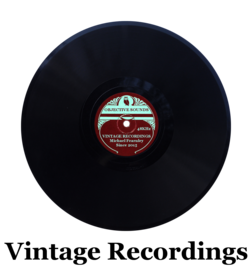
"The Symphony No. 8 in F Major, Op. 93 is a symphony in four movements composed by Ludwig van Beethoven in 1812. Beethoven fondly referred to it as "my little Symphony in F," distinguishing it from his Sixth Symphony, a longer work also in F.
The Eighth Symphony is generally light-hearted, though not lightweight, and in many places cheerfully loud, with many accented notes. Various passages in the symphony are heard by some listeners to be musical jokes. As with various other Beethoven works such as the Opus 27 piano sonatas, the symphony deviates from Classical tradition in making the last movement the weightiest of the four."
| Composer | Ludwig van Beethoven |
|---|---|
| Work | Symphony No. 8 in F Major, Op. 93 |
| Orchestra | The Vienna Philharmonic Orchestra |
| Conductor | Felix Weingartner |
| Date Recorded | 25th February 1936 |
| Date Restored | 29th July 2015 |
| Serial Numbers | Columbia LX563-5 |
| Recording Cutter | Blumlein |
| Bandwidth | 50Hz to 7KHz |
| Transfer Stylus | 2.8 mil truncated elliptical |
| Transfer Cartridge | Stanton 500 at 5g |
| Transfer Turntable | Hitachi HT-350 at 78RPM |
| Cutter Compensation | 300Hz first order lift down to 40Hz |
| Click Reduction | DeClick, wavelet mode, 57, 2 passes |
| Crackle Reduction | DeCrackle, wavelet mode, 54, 2 passes |
| Low Frequency NR | DeNoise LF, mono, 150Hz |
| Wideband NR | DeNoise, -47dB noise floor, -9dB reduction |
| Limiting Filter | 48dB/octave Butterworth, at bandwidth limits |
| Additional Eq. | None needed |
A fairly standard European recording from this era with the usual bandwidth limits in place. Unfortunately, there are a few rather distorted passages, mainly due to the rather high recording levels. Using a 2.8 mil stylus over a 3.2 mil one seemed to improve this, at a slight expense in terms of noise floor. The noise reduction was fairly straightforward, with no sections requiring any time consuming minor adjustments to avoid processing artifacts. While the noise at the beginning of the transfer was already low, this recording responded excellently to click and crackle removal, allowing for a very low final noise level.
The audio tracks listed on this page are digital restorations of 78 RPM records in my possession, whose mechanical copyright has expired before the time of this pages publication. No later release is used so any copyright affecting such a release does not apply to any of the sound recordings shown on this page. Claims to the contrary may be vexatious if pursued. Any communication between parties claiming copyright of the material on this website and the author of this site will be published immediately with great derision. The contents of this page must not be copied represented or sold without express permission.
Michael Fearnley 2015